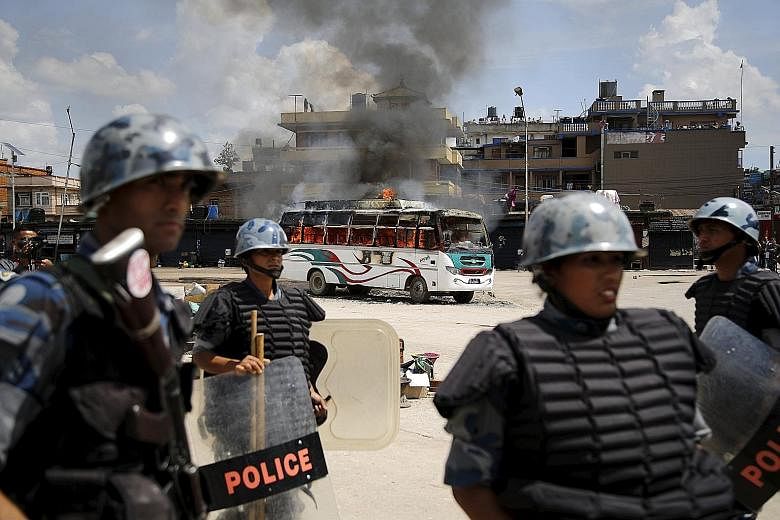KATHMANDU • Nepal adopted a new Constitution yesterday aimed at bolstering its transformation into a peaceful democracy after decades of autocratic rule and a long civil war, even as protests raged over its terms.
The charter, the first to be drawn up by elected representatives, had been voted into law on Wednesday after the main political parties - spurred by a deadly earthquake to shelve their differences - agreed on a new federal structure.
Firecrackers went off in celebration in Kathmandu as President Ram Baran Yadav announced the adoption of the long-delayed Constitution in Parliament.
"I congratulate all Nepali brothers and sisters on this historic moment, the announcement of Nepal's Constitution from the Constituent Assembly by the representatives of the people for democratic rights, economic prosperity and national unity," he said.
"The democratic revolution of Nepal's people which began nearly seven decades ago and the people's wish for long-term peace have become a reality today."
The new Constitution is the final stage in a peace process that began when Maoist fighters laid down their arms in 2006 after a decade- long insurgency aimed at abolishing an autocratic monarchy and creating a more equal society.
But its adoption follows weeks of clashes between police and protesters that have left more than 40 people dead, including a police officer lynched as he was taken to hospital in an ambulance.
One protester was killed yesterday when police fired into a crowd which had defied a curfew in the southern district of Parsa to demonstrate against plans to divide the world's youngest republic into seven federal provinces.
The move to create a new federal structure that will devolve power from the centre has widespread support, but critics say the planned internal borders will leave some historically marginalised groups under-represented in Parliament.
They include the Madhesi and Tharu ethnic minorities who mainly inhabit Nepal's southern plains, along the border with India.
Neighbouring India has expressed concern at the violence, which has seen some parts of southern Nepal shut down for weeks.
Work on the Bill began in 2008 after the Maoists won parliamentary elections and abolished the monarchy. It was initially supposed to finish by 2010, but the Maoists were unable to secure enough support for the two-thirds majority needed to push it through Parliament.
The three biggest forces in Parliament - the Nepali Congress, UML and Maoist parties - finally reached agreement in June, spurred by a 7.8-magnitude earthquake two months earlier that killed nearly 8,900 people and destroyed about half a million homes.
"We have waited for this for so long. I am happy today, but there is also a sense of sadness because we have seen so much violence in the last weeks," said finance worker Nabina Ranjit, 27.
"I wish everyone would be celebrating today but, unfortunately, the leaders have failed to address the grievances of all Nepalis."
AGENCE FRANCE-PRESSE

